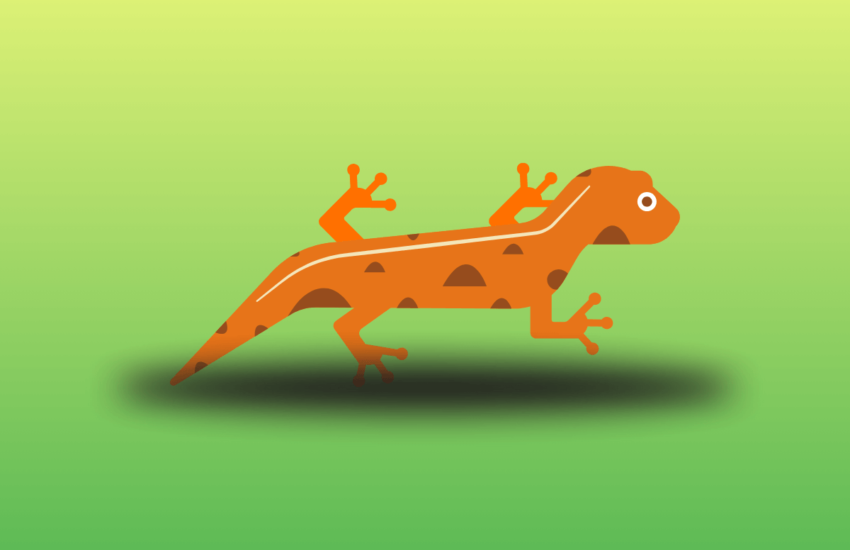Top 7 Smallest Animals on Earth
Though a miniature size may seem like a negligible characteristic feature, in the biological world, as it can come with some incredible advantages. Small mammals can occupy ecological functions which are unattainable to bigger animals, and their tiny frames make it easier to go undercover, burrow into minor cracks, or climb upon the fragile branches.
They’re also remarkably cute. Here’s our list of some of the Earth’s smallest mammals.
1. Etruscan Shrew
There can be found a number of tiny shrews. However this pipsqueak achieves their goal by just being the smallest in size. On the basis of the mass, the Etruscan shrew is known to be the smallest mammal in the Earth. On an average, The Etruscan shrew weighs less than 0.14 ounces and their body length is around 1.57 inches.
Besides being such a small animal, it has a huge appetite and it generally eats about twice its own body weight each day, that is, eating about 1.5–2 times its own body weight per day. The Etruscan shrew is also known by the name of Etruscan pygmy shrew or the white-toothed pygmy shrew.
The Etruscan shrew is distinguished by very rapid movements and a fast metabolism. It feeds on several tiny vertebrates and invertebrates, which mostly comprises of insects, and can hunt individuals of the same size as it. These Etruscan shrews prefer warm and damp weather conditions and are broadly scattered in the belt between 10° and 30°N latitude expanding from Europe and North Africa up to Malaysia. They are also seen in the Maltese islands, located in the middle of the Mediterranean Sea. Although found everywhere and not threatened overall, they are generally uncommon and are endangered in some of the countries.
2. Pygmy Jerboa
Pygmy jerboas declare the rodent subfamily Cardiocraniinae and are the tiniest looking rodents in the Earth. Their body stretches to a length of about 1.6 inches and they have their tails for about 3 inches long.
They are also referred to as the Dwarf Three-toed Jerboa. It seems to look just like a kid’s art project with just a miniature cotton ball for the head and a long string for the tail when sitting. When pygmy jerboas stand up, they look more like tiny version of the Kangaroos, with their hind legs bigger than their front legs and inordinately big feet to hold them up. The Baluchistan Pygmy Jerboa is known to be the Earth’s smallest species of rodent with a weight of less than an ounce of roughly .132o oz.
For their size, these small creatures sure can hop. Jerboas have kangaroo-like legs which enables them to jump distances far away from their body lengths. It is also known for its manner of adaptation which helps them to move swiftly over the vast, arid deserts in Northern Africa and Asia.
Jerboas look more like small kangaroos, and have some other resemblances as well. Both have long hind legs, very short forelegs, and long tails. Jerboas roam around in an identical way to kangaroos, which is by jumping.
3. Bumblebee Bat
The bumblebee bat, also referred to as Kitti’s hog-nosed bat, is the Earth’s smallest bat and the smallest mammal in the Earth depending on their skull size. They weigh for about .07 ounces which is known to be less than a penny. They have a length of about 1.14 inches. It is so small that you might go all puzzled to find a bumblebee when it goes buzzing by your ear all night.
Unluckily, its fragile size is also a representative of its biological status. The International Union for Conservation of Nature (IUCN) lists the animal closely as threatened, as a few of their population is considered to be at a high risk of extinction primarily because of the human activities.
The bat eats during short activity periods in the evening as well as in the dawn. They scrounge around for insects and little bugs nearby forest areas. Females procreate each year to a single offspring. Unlike many other bat species, they actually live in small colonies and abstain themselves from moving together. These miniature mammals when found in a cave appears to look like black spots on the walls of cave, and you may even fail to recognise them without going in too close.
No one knows how many of them can be found living in Myanmar, as a thorough survey could not be conducted because of the security issues. But scientists believe that the Myanmar population is probably quite small because of the bat’s definite microhabitat prerequisites.
4. Mouse Lemurs
These adorable creatures are the world’s smallest primates, measuring up to 11 inches in length including their tails. The smallest species is the Madame Berthe’s mouse lemur, which measures just about 3.62 inches in length and weighs only about an ounce.
The pygmy mouse lemur is known to be the smallest primate on the Earth. Its head and body are less than two and a half inches of length, though its tail is a little more than twice that long. These nocturnal lemurs are threatened and are found in the dry forests of western Madagascar and hardly are they seen leaving the forests’ trees.
These softball-sized omnivores eat in solitary and mostly feed on “honeydew,” a sugary by-product of insect digestion. But besides spending their foraging time in solitary, they do sleep with other mouse lemurs about half the time. Mouse lemurs have the smallest known brain of any primate, which is about 0.004 pound, that is, 2 grams.
Mouse lemurs are omnivorous in nature and their appetite are miscellaneous and it comprises of insect secretions, arthropods, small vertebrates, gum, fruit, flowers, nectar, and also leaves and buds based on the changing of the seasons.
Mouse lemurs are well prevented from the risk of getting hunted down. However they are still captured for the exotic pet trade. They are most intimated by loss of the limited woodland habitat of their Madagascar home.
5. Least Weasel
This over-particular, wise little weasel is considered to be one of the smallest species of the Carnivora order and this makes it the tiniest true carnivore in the whole world. Least weasel males from the regions of North America only reach up to 7 inches, and the females grow to around 5 inches and it weighs less than 1.5 ounces.
It might be even difficult to wonder something so small being such a clever hunter. However, the lesser weasel is very dangerous to any small rodent it meets with. Least weasel portrays themselves as much bigger, fiercer personality when compared to the size of their body. Their little size varies from three to a dozen or more in some species.
Least weasels from diverse parts of its range differ largely in size. Their body is slender and elongated, the legs and tail are comparatively short. The colour differs depending on the geographical regions, as does the pelage type and length of tail. The dorsal surface, flanks, limbs and tail of the animal are generally comes under the shade of brown while the lower body parts are white in color.
6. Pygmy Possum
Differing in length between 2 and 4 inches and often weighing barely over .35 ounces, these tiny marsupials are seen hanging in an upside down position from trees in Australia and New Guinea.
What makes this find even more intriguing is the fact that there are only 113 formal records of the species on the Island to begin with. Perhaps that is due to this small adorable mammal.
Coming in at just under 10 grams it is considered to be even smaller than a door mouse and can effortlessly hide under just about anything. it also has an exceedingly limited range, and is usually found on Kangaroo Island, Tasmania, and merely on mainland South Australia and Victoria.
IUCN lists the species of the Mountain Pygmy Possum, under the critically endangered category. This species has a restricted habitat in the alpine areas of Australia. Ski resorts, road construction, and extensive bushfires have led to habitat destruction. The migratory Bogong moth makes up a remarkable portion of their diet and brings chemicals from pesticides in breeding grounds to the mountain. Scientists believe that this is one factor resulting to the reducing population.
7. African Pygmy Mouse
Mice are considered for their small size and the world’s smallest mouse. However, the African pygmy mouse takes that character to the extreme. It is 1.2 to 3.1 inches in length and weighing as little as 11 ounces. It is so tiny that it generally remains hydrated by licking dew off tiny pebbles which it cunningly stacks in front of its burrow.
Some people keep these impish mice as entertaining pets. Owners must stay hands-off with them, though, as they are significantly fragile.
They are a social species, and as pets, it’s suggested to always keep them in pairs, or normally in small colonies. In the wild, they will reside in burrows of individual family units. These will be formed under piles of debris or fallen logs, stockpiling pebbles in front of their burrow.


